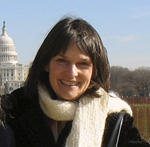One of my peeves is that people come to a place like GNP and piously say, "Oh, how beautiful!" without assimilating anything but the postcard repetition they snap with their little digital camera, probably a selfie that crowds out a mountain. They don't have a clue about some of the most sacred, massive and primeval forces. This bugs me partly because my family in the Fifties were towed along on my father's path as he park-hopped us across the continent. But he never tried to explain what we were seeing -- just that these were a string of pilgrimage sites. And that's how I got here, going down the list of missed parks on the way from college in Chicago to home in Portland.
Marrying Bob Scriver meant going through the curtain of stone to stories. Although once he was telling about being up on the summit of one of the peaks and I asked him what was up there. "Rocks," he said. He was trying to put me off from his own secret exaltation, so it wouldn't become ordinary and shared.
Anyway, the book is on Amazon: I just ordered a copy for $8. Here's Sally Thompson, who is not exactly the author -- maybe the main diplomat. She makes me think of "Bones," the best of the CSI TV shows.
____________________
‘People Before the Park’ offers a look into 19th century Kootenai and Blackfeet Tribal tradition
Posted: Wednesday, October 28, 2015 6:00 am
Just released and available at bookstores around Montana, “People Before the Park: The Kootenai and Blackfeet Before Glacier National Park” explores the two tribes in a unique and important way.
There have been many books written about the Blackfeet and Kootenai tribes, and with such wealth of materials, author Sally Thompson at first thought that writing a history of the tribes from prehistoric times to the establishment of Glacier National Park would be possible. The assignment had come from Glacier National Park itself in 2008, but a change in approach soon became apparent to her.
“Given certain political issues, historical issues of trust between tribes and anthropologists, and controversial interpretations of spotty archeological data, it soon became clear that our initial goal wasn’t going to be easy to reach,” Thompson writes in her introduction. “A new approach was needed. Many meetings and six months later, we had a new structure in place. The Kootenai Culture Committee agreed to participate, noting an opportunity to correct common misperceptions, and committee members assigned the oversight of the project to Vernon Finley and Naida Lefthand. The Blackfeet Tribal Council, led by Willie Sharp, accepted a plan for the Pikunni Traditional Association to oversee the Blackfeet effort.”
With Blackfeet and Kootenai experts in place, the direction of the book took off independently of previous works and stands alone in both its approach and results. It was decided to focus on the seasonal round of the two tribes during the 19th century, avoiding conflict over the archeology of earlier times. And each tribe used its own criteria to decide what information to present and how to present it to readers.
The result is two very different approaches to telling the story. The Kootenai, for example, focus on the material aspects of the season, what foods are available, and when, where and how they would be prepared. Seasonal movement was also emphasized, especially routes to favored hunting and collecting grounds as well as strategies employed in traveling into Blackfeet country to hunt buffalo. The spiritual side of their lives, however, is not dealt with in detail, keeping it within their personal experience.
The Blackfeet, on the other hand, arrange their telling of the seasonal round with their spiritual ceremonies as the center about which the other activities revolve. Starting their calendar at the Vernal Equinox, each succeeding month is described not only in terms of movement, and of the plants and animals available at the time, but also the ceremonies that accompany those activities.
The catalog of plants and animals both used and still in use is extensive. Experts such as Pauline Matt offer their extensive knowledge of traditional botany to accurately describe all the plants, how they are collected and processed, and how they are used. Meanwhile, traditional experts like Percy Bullchild are quoted in Napi and other stories that explain how the world view of the Blackfeet fit perfectly into their lives, giving them direction and meaning.
One thing the Kootenai and Blackfeet authorities emphasized they wanted corrected was the previous focus by earlier writers on the sporadic warfare between the two tribes. Oftentimes, they noted members of the tribes interacted peacefully and in friendship, and this aspect receives attention.
In all, the book presents the lives of two neighboring but very different tribes in all their refinement and complexity, fitting perfectly into their environments. Sally Thompson has interwoven the written historical record of the Kootenai and Blackfeet in the 19th century with frequent expansions and explanations from Kootenai and Blackfeet experts to produce an historical work unlike most that students and readers encounter. It is an altogether pleasant experience to pass through the pages, a story of a time not that long ago.
__________________
__________________


No comments:
Post a Comment